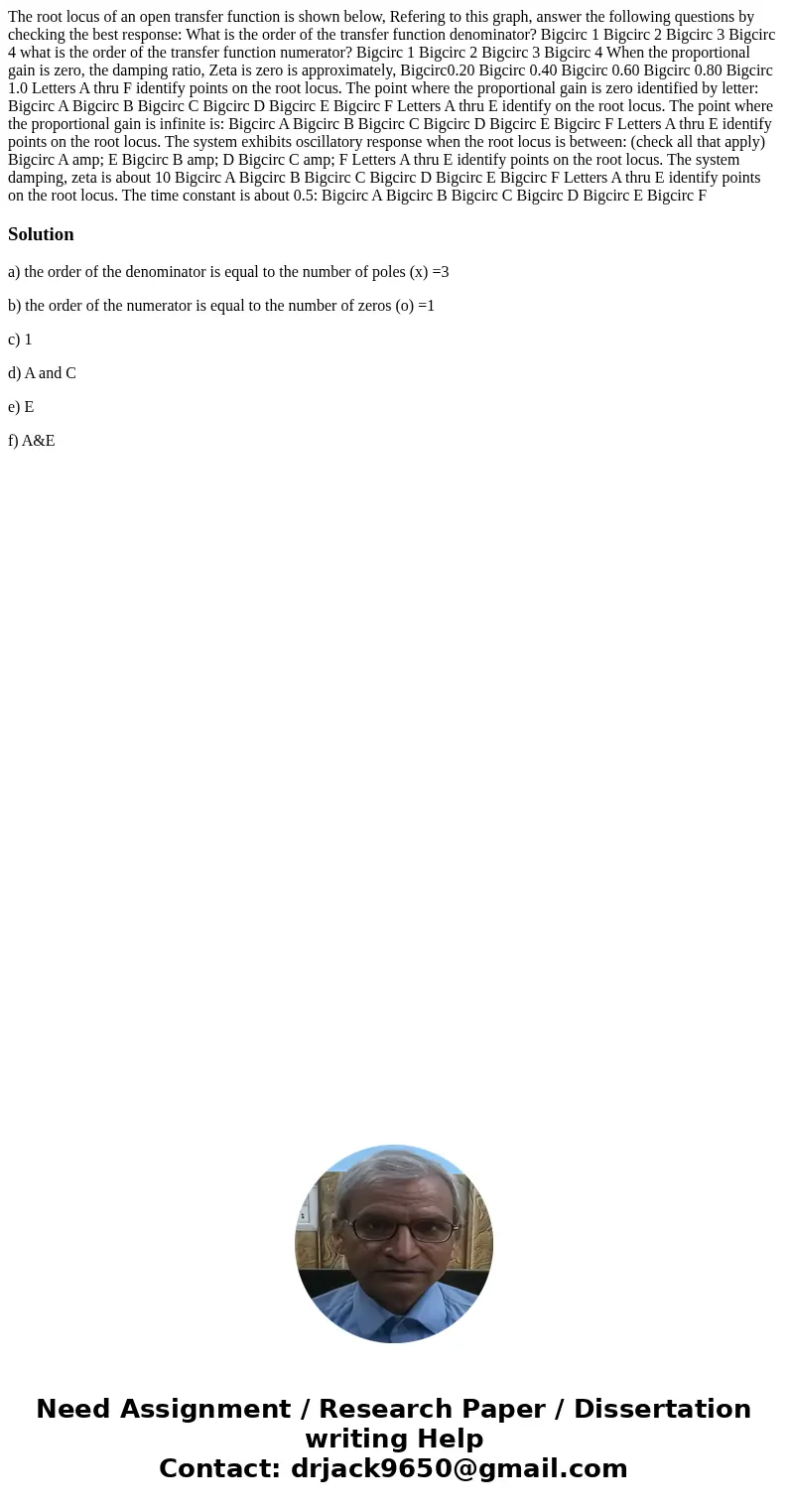The root locus of an open transfer function is shown below R
The root locus of an open transfer function is shown below, Refering to this graph, answer the following questions by checking the best response: What is the order of the transfer function denominator? Bigcirc 1 Bigcirc 2 Bigcirc 3 Bigcirc 4 what is the order of the transfer function numerator? Bigcirc 1 Bigcirc 2 Bigcirc 3 Bigcirc 4 When the proportional gain is zero, the damping ratio, Zeta is zero is approximately, Bigcirc0.20 Bigcirc 0.40 Bigcirc 0.60 Bigcirc 0.80 Bigcirc 1.0 Letters A thru F identify points on the root locus. The point where the proportional gain is zero identified by letter: Bigcirc A Bigcirc B Bigcirc C Bigcirc D Bigcirc E Bigcirc F Letters A thru E identify on the root locus. The point where the proportional gain is infinite is: Bigcirc A Bigcirc B Bigcirc C Bigcirc D Bigcirc E Bigcirc F Letters A thru E identify points on the root locus. The system exhibits oscillatory response when the root locus is between: (check all that apply) Bigcirc A amp; E Bigcirc B amp; D Bigcirc C amp; F Letters A thru E identify points on the root locus. The system damping, zeta is about 10 Bigcirc A Bigcirc B Bigcirc C Bigcirc D Bigcirc E Bigcirc F Letters A thru E identify points on the root locus. The time constant is about 0.5: Bigcirc A Bigcirc B Bigcirc C Bigcirc D Bigcirc E Bigcirc F
Solution
a) the order of the denominator is equal to the number of poles (x) =3
b) the order of the numerator is equal to the number of zeros (o) =1
c) 1
d) A and C
e) E
f) A&E

 Homework Sourse
Homework Sourse